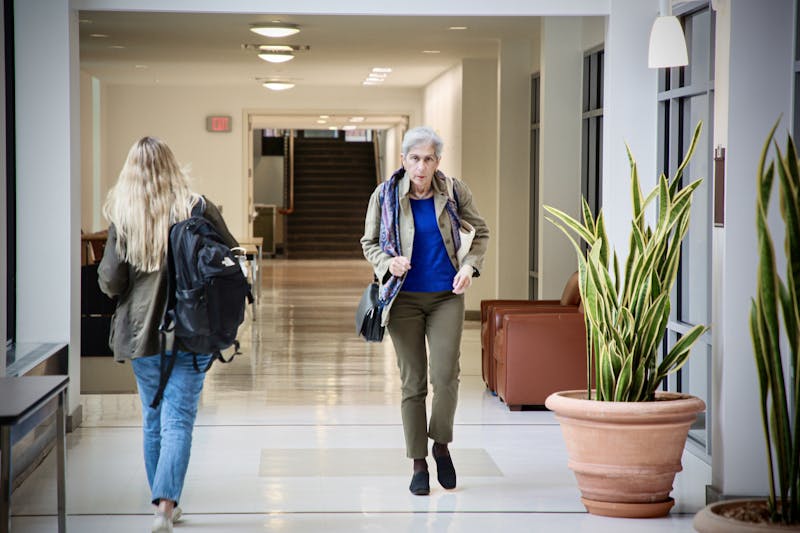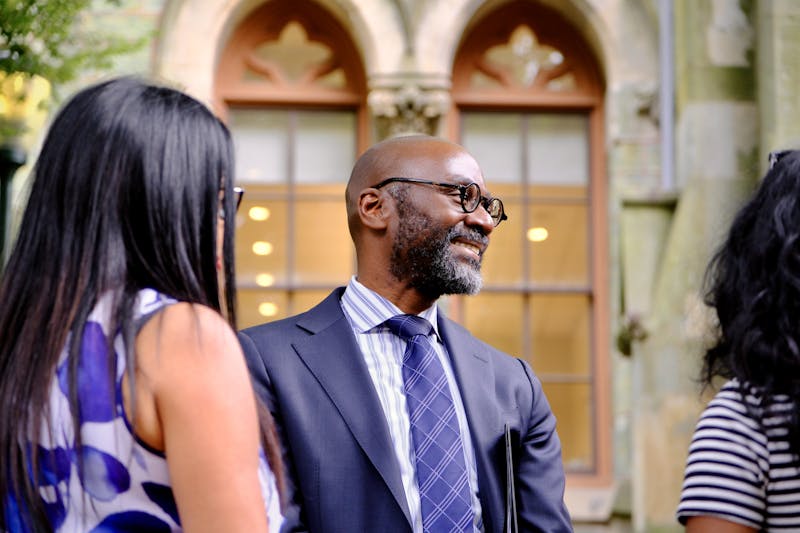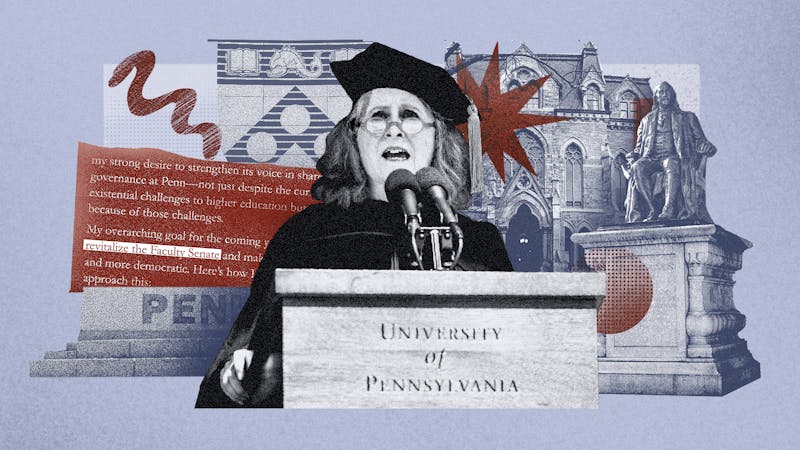
Professor Robert Ghrist wrote a 45-page book with various cartoon images as a way to teach higher-level mathematics.
Credit: Guyrandy Jean-GIlles , Guyrandy Jean-GIlles“Funny Little Calculus Text” sounds more like a children’s book than the title of a Penn professor’s latest book. But for professor Robert Ghrist, a playful title is just one aspect of showing people that math can be fun.
Ghrist, a member of the Penn Integrates Knowledge program, wants to make higher-level mathematics more accessible to the masses by developing new methods to make math more enjoyable. He hopes to renew people’s interest in mathematics and help develop a new generation of mathematicians.
One of the challenges that Ghrist faces is that most fail to see what makes math interesting by itself. Wharton freshman Max Slosburg, for example, believes that math can be interesting, but also sees it as too difficult to study and not worth pursuing by itself.
“There are a lot of things you can do with a math major, but you can also do a decent amount of those things with other majors too,” Slosburg said. “So I know that a math major would help me pursue my career in the business world, but I think a major in, say, finance would help me the same way, and I would struggle less in college.”
To combat these popular opinions, Ghrist has developed new tools that show people how interesting and fun higher-level mathematics can be. His 45-page “Funny Little Calculus Text” consists of various drawings and cartoon images depicting real math, and his online courses teach students basic math while hinting at interesting highlights of more complicated subjects.
“I want to inspire people to pursue math later on in life. I agree that higher-level math is difficult, and people need to see the interesting bits, because they need to be motivated to muddle through the hard part,” Ghrist said.
Ghrist is one of seven National Security Science and Engineering Faculty Fellows, and his work in PIK has allowed him to bridge the gap between mathematics in the School of Arts and Sciences and various Engineering fields such as biomedical engineering and computer science. Ghrist specializes in algebraic topology, a branch of math that works qualitatively rather than quantitatively.
“The idea of algebraic topology is to reduce higher-level math concepts into basic vectors and matrices, then conduct linear algebra on them. I want to break everything down into simple algebra,” Ghrist said.
Algebraic topology is known for its graphic approach to problem-solving, characterizing problems with shapes and holes rather than numbers. The relatively new field has already seen some applications in areas such as neuroscience and data study. As Ghrist explains, it is more effective at solving some problems due to its unique approach.
“The basic premise is, imagine every space in the dataset as holes. We program the computer to move around within those holes in very specific ways,” Ghrist said. “Those vectors tell us things about the data that we previously would never be able to know.”
The Daily Pennsylvanian is an independent, student-run newspaper. Please consider making a donation to support the coverage that shapes the University. Your generosity ensures a future of strong journalism at Penn.
DonatePlease note All comments are eligible for publication in The Daily Pennsylvanian.







